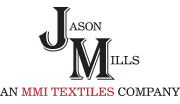Filtration textiles are specialized fabrics designed to separate passing solids from liquids or gasses. They are typically made of tightly knit or woven materials that allow desired substances to penetrate while trapping and holding unwanted particles. Various industries benefit from these materials, including wastewater treatment, air purification, and oil filtration. A filtration textile manufacturer produces […]
Blog
Introducing 1920SD: The New Style of Solution-Dyed Material
The evolution of solution dyes is a significant advancement in materials engineering, especially in industries requiring color consistency, durability, and performance. Solution-dyed materials undergo a process where color is integrated throughout the material at the molecular level, unlike traditional piece-dyed goods. This results in superior color retention and resistance to fading or bleeding. In this […]
Recycled Materials & Sustainability
The increasing focus on sustainability in the textile industry reflects an awareness of environmental issues and the necessity for responsible business practices. Recycled materials, especially in the form of fibers or fabrics, have become crucial in minimizing the industry’s ecological impact. By utilizing these resources, manufacturers contribute to reducing the consumption of raw materials and […]
Advantages of Warp Knitting in Industrial Textiles
Click to Expand Warp knitting is a method of creating knitted fabrics using multiple parallel yarns. Each needle or hook in the knitting machine works with its line, forming a loop that interlocks with adjacent loops. As a result, the textile produced through this technique has a smooth, flat surface and tends to be less […]
How To Pick the Right Industrial Knit Fabric
Click to Expand Industrial fabrics are a type of textiles created exclusively for industrial use. They are purposefully designed and produced to have particular qualities and features that make them suitable for various industrial environments. The fabrics are usually constructed from synthetic fibers like polyester, nylon, aramid, or fiberglass. This enhances their strength, durability, and […]
How To Get the Best Patient Lift Sling Material
Patient lift slings securely move individuals with mobility issues, whether due to age, injury, illness, or disability. They are designed to operate in tandem with hoist systems and provide mechanical support and lifting capabilities for patient transfer. Moreover, they are commonly used in hospitals, nursing homes, rehabilitation centers, and home healthcare environments. Selecting the appropriate […]
Knits vs. Woven vs. Non-Woven Fabrics: What’s the Difference?
Click to Expand When choosing the correct material for a project or application it is important to understand the differences between knits, wovens and nonwovens (and how the physical differences of the materials will ultimately affect the performance of the final product). What Are Knitted Fabrics? Industrial knit fabrics are designed and manufactured for use […]
Berry Amendment Compliant Fabrics 101
Click to Expand Selling to the U.S. Department of Defense (DoD) requires manufacturers to comply with numerous production restrictions that prevent the DoD from purchasing goods or materials from other countries. One such federal regulation is the Berry Amendment. Under this amendment, DoD contractors, as well as subcontractors, are restricted to the purchase of Berry […]
Heavy-Duty Knit Mesh Fabric: Nylon & Polyester
Mesh fabric is a knit material composed of evenly distributed openings to create a netting structure for breathable ventilation in textiles. Designs for these mesh fabrics tend to vary in dimensions, aperture openings, finishes, colors, and material weights. Heavy-duty mesh fabric, in particular, presents a versatile solution for rugged or demanding applications. Nylon and polyester, […]
Industrial Protective/Safety Fabrics 101: Types & Applications
Professionals working in high-risk environments face threats from explosions, fire, metal sparks, high-voltage power, sharp objects, and toxic or corrosive chemicals. They require reliable protective clothing to keep them safe from potential dangers. Industrial protective fabrics are technical clothing meant to protect workers from environmental and workplace hazards. Safety fabrics should be comfortable, provide maximum […]
